Contents
Preface
Chap 1 Introduction to Sensitivity Analysis
1.1 Models and sensitivity analysis
1.1.1 Definiition
1.1.2 Models
1.1.3 Models and uncertainty
1.1.4 How to set up uncertainty and sentivity analyses
1.1.5 Implications for model quality
1.2 Methods and settings for sensitivity analysis - An introduction
1.2.1 Local versus global
1.2.2 A test model
1.2.3 Scatterplots versus derivatives
1.2.4 Sigma-normalized derivatives
1.2.5 Monte Carlo and Linear Regression
1.2.6 Conditional Variances – First Path
1.2.7 Conditional Variances – Second Path
1.2.8 Application to Model (1.3)
1.2.9 A First Setting: ‘Factor Prioritization’
1.2.10 Nonadditive Models
1.2.11 Higher-order Sensitivity Indices
1.2.12 Total Effects
1.2.13 A Second Setting: ‘Factor Fixing’
1.2.14 Rationale for Sensitivity Analysis
1.2.15 Treating Sets
1.2.16 Further Methods
1.2.17 Elementary Effect Test
1.2.18 Monte Carlo Filtering
1.3 NONINDEPENDENT INPUT FACTORS
1.4 POSSIBLE PITFALLS FOR A SENSITIVITY
ANALYSIS
1.5 CONCLUDING REMARKS
Chap 2 Experimental Designs
2.1 INTRODUCTION
2.2 DEPENDENCY ON A SINGLE PARAMETER
2.3 SENSITIVITY ANALYSIS OF A SINGLE
PARAMETER
2.3.1 Random Values
2.3.2 Stratified Sampling
2.3.3 Mean and Variance Estimates for Stratified Sampling
2.4 SENSITIVITY ANALYSIS OF MULTIPLE
PARAMETERS
2.4.1 Linear Models
2.4.2 One-at-a-time (OAT) Sampling
2.4.3 Limits on the Number of Influential Parameters
2.4.4 Fractional Factorial Sampling
2.4.5 Latin Hypercube Sampling
2.4.6 Multivariate Stratified Sampling
2.4.7 Quasi-random Sampling with Low-discrepancy
Sequences
2.5 GROUP SAMPLING
Chap 3 Elementary Effects Method
3.1 INTRODUCTION
3.2 THE ELEMENTARY EFFECTS METHOD
3.3 THE SAMPLING STRATEGY AND ITS
OPTIMIZATION
3.4 THE COMPUTATION OF THE SENSITIVITY
MEASURES
3.5 WORKING WITH GROUPS
3.6 THE EE METHOD STEP BY STEP
3.7 CONCLUSIONS
Chap 4 Variance-based Methods
4.1 DIFFERENT TESTS FOR DIFFERENT SETTINGS
4.2 WHY VARIANCE?
4.3 VARIANCE-BASED METHODS. A BRIEF HISTORY
4.4 INTERACTION EFFECTS
4.5 TOTAL EFFECTS
4.6 HOW TO COMPUTE THE SENSITIVITY INDICES
4.7 FAST AND RANDOM BALANCE DESIGNS
4.8 PUTTING THE METHOD TO WORK: THE
INFECTION DYNAMICS MODEL
4.9 CAVEATS
Chap 5 Factor Mapping
and Metamodelling
5.1 INTRODUCTION
5.2 MONTE CARLO FILTERING (MCF)
5.2.1 Implementation of Monte Carlo Filtering
5.2.2 Pros and Cons
5.2.3 Exercises
5.2.4 Solutions
5.2.5 Examples
5.2.5.1 Stability analysis of a controlled chemical reactor
5.2.5.2 Stability analysis of a small macroeconomic model
5.2.5.3 Mapping propagation of the infection in the simple infection
dynamics model
5.3 METAMODELLING AND THE
HIGH-DIMENSIONAL
MODEL REPRESENTATION
5.3.1 Estimating HDMRs and Metamodels
5.3.1.1 Smoothing scatterplots using the Haar wavelet
5.3.1.2 Spline smoothing
5.3.1.3 State-dependent regressions
5.3.1.4 Estimating sensitivity indices
5.3.2 A Simple Example
5.3.2.1 Haar wavelet smoothing
5.3.2.2 Spline smoothing (HP-filter)
5.3.2.3 SDR estimation
5.3.3 Another Simple Example
5.3.4 Exercises
5.3.5 Solutions to Exercises
5.4 CONCLUSIONS
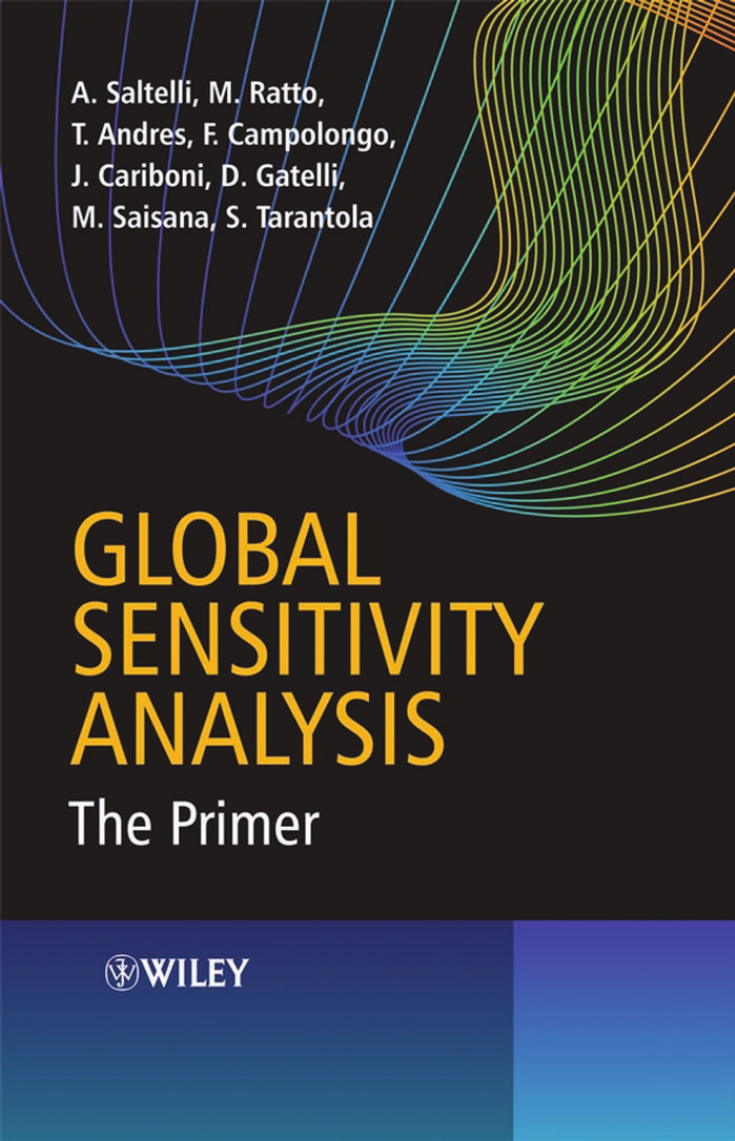
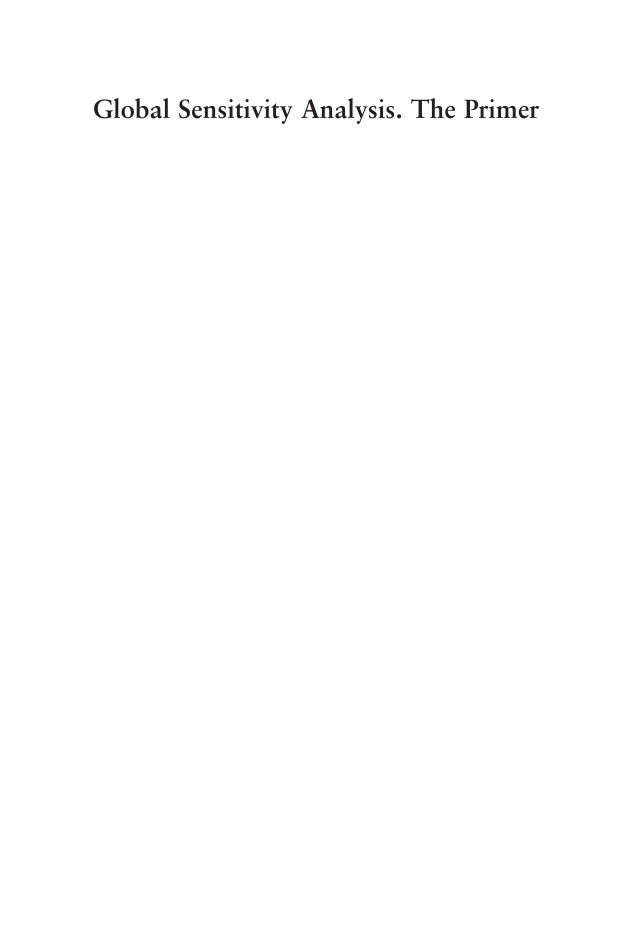

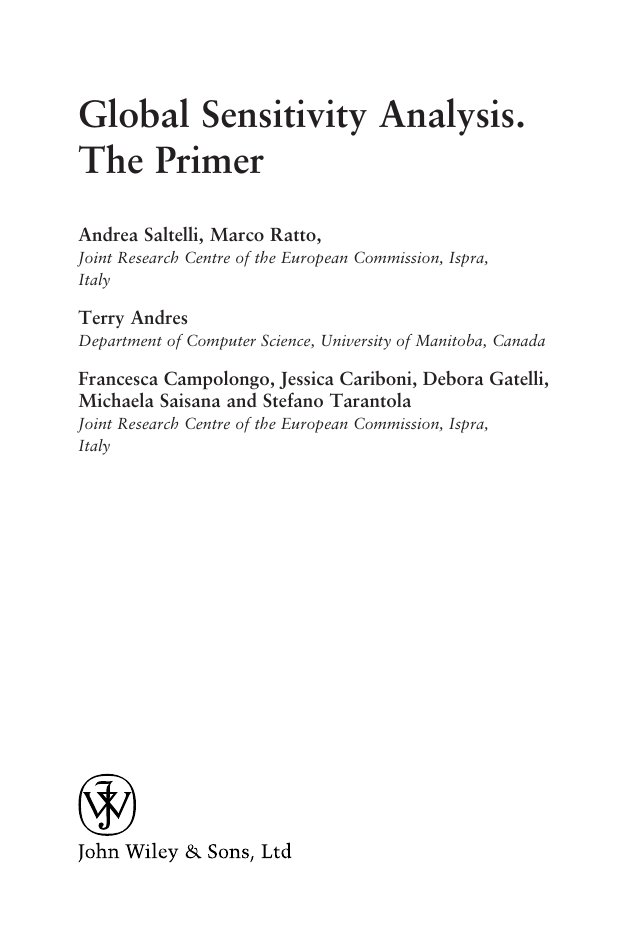
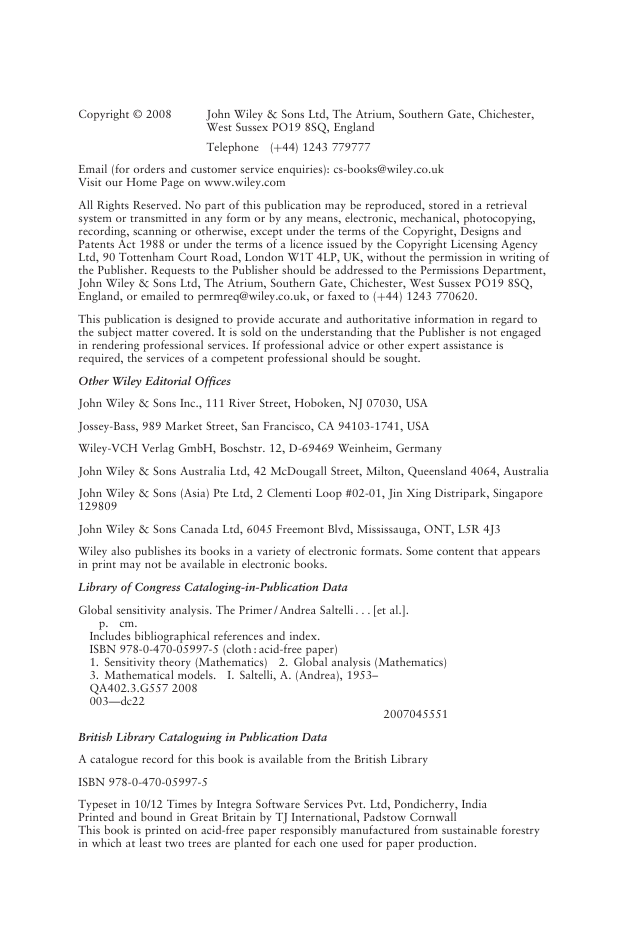
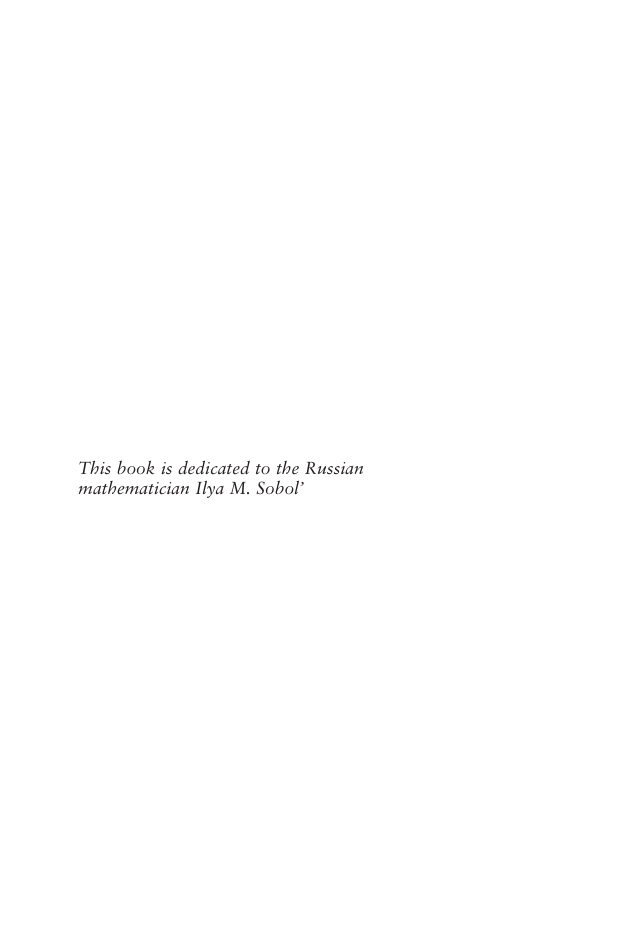
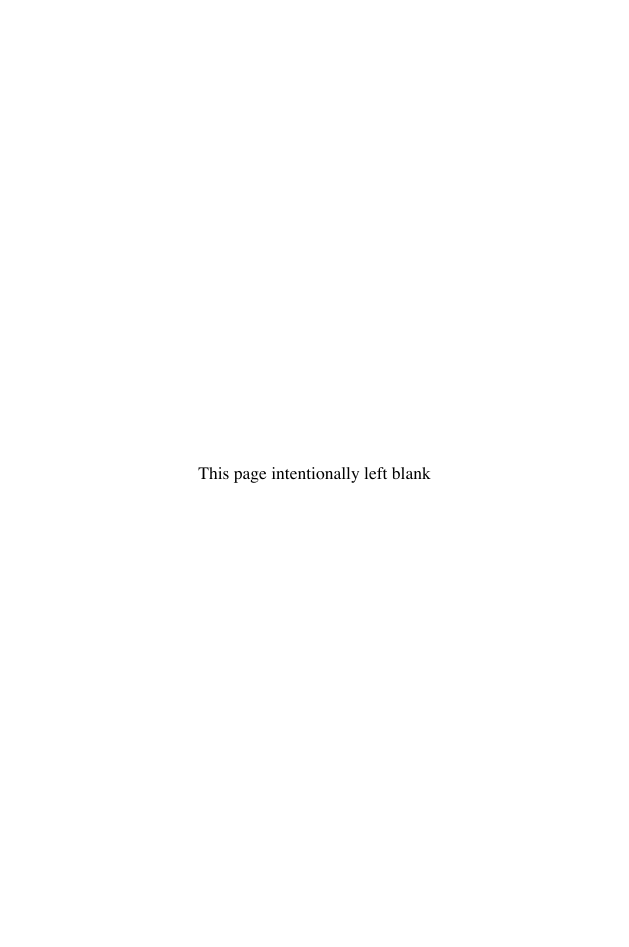
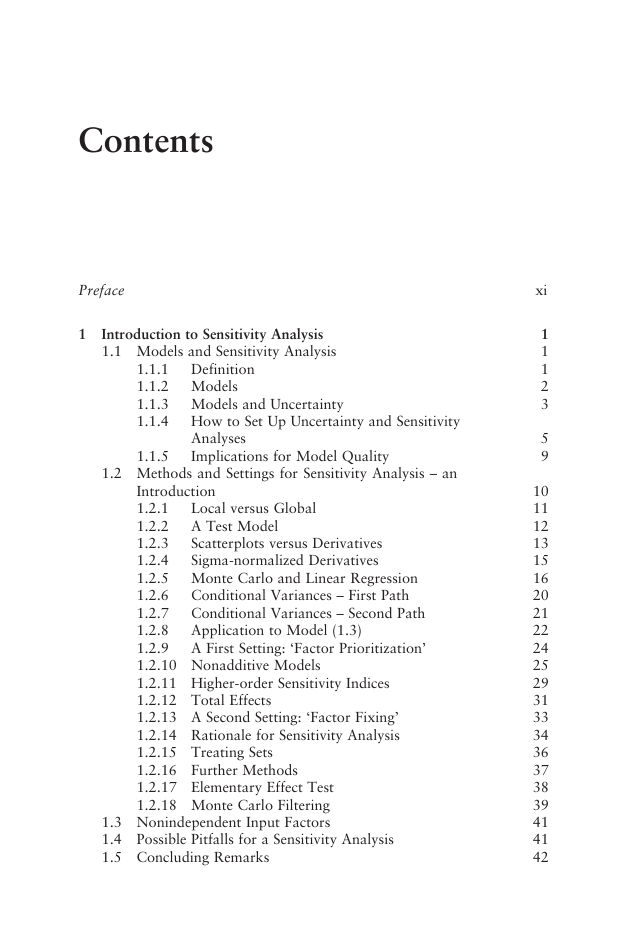








 2023年江西萍乡中考道德与法治真题及答案.doc
2023年江西萍乡中考道德与法治真题及答案.doc 2012年重庆南川中考生物真题及答案.doc
2012年重庆南川中考生物真题及答案.doc 2013年江西师范大学地理学综合及文艺理论基础考研真题.doc
2013年江西师范大学地理学综合及文艺理论基础考研真题.doc 2020年四川甘孜小升初语文真题及答案I卷.doc
2020年四川甘孜小升初语文真题及答案I卷.doc 2020年注册岩土工程师专业基础考试真题及答案.doc
2020年注册岩土工程师专业基础考试真题及答案.doc 2023-2024学年福建省厦门市九年级上学期数学月考试题及答案.doc
2023-2024学年福建省厦门市九年级上学期数学月考试题及答案.doc 2021-2022学年辽宁省沈阳市大东区九年级上学期语文期末试题及答案.doc
2021-2022学年辽宁省沈阳市大东区九年级上学期语文期末试题及答案.doc 2022-2023学年北京东城区初三第一学期物理期末试卷及答案.doc
2022-2023学年北京东城区初三第一学期物理期末试卷及答案.doc 2018上半年江西教师资格初中地理学科知识与教学能力真题及答案.doc
2018上半年江西教师资格初中地理学科知识与教学能力真题及答案.doc 2012年河北国家公务员申论考试真题及答案-省级.doc
2012年河北国家公务员申论考试真题及答案-省级.doc 2020-2021学年江苏省扬州市江都区邵樊片九年级上学期数学第一次质量检测试题及答案.doc
2020-2021学年江苏省扬州市江都区邵樊片九年级上学期数学第一次质量检测试题及答案.doc 2022下半年黑龙江教师资格证中学综合素质真题及答案.doc
2022下半年黑龙江教师资格证中学综合素质真题及答案.doc